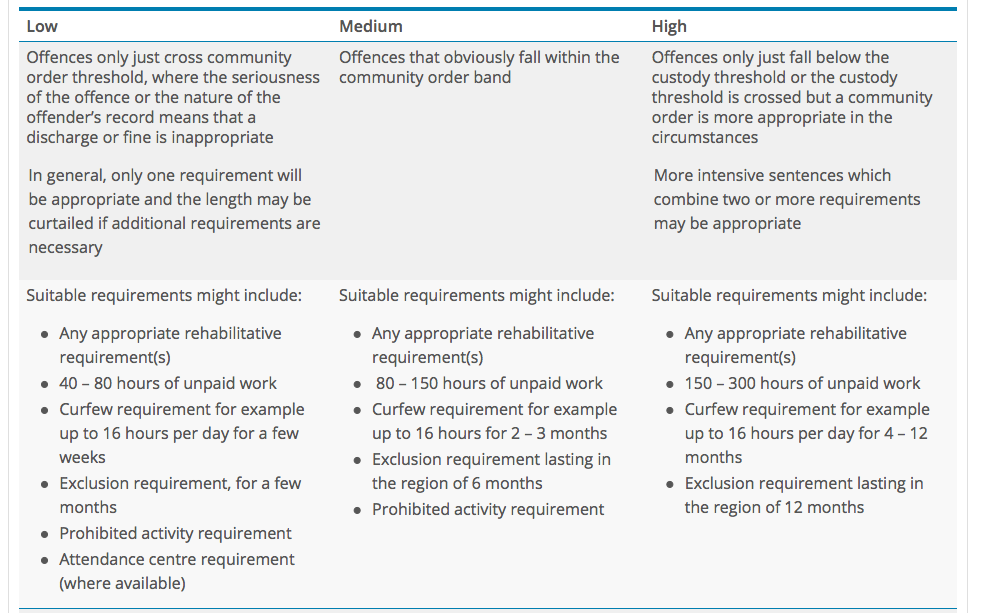When is it lawful to exclude trans women from women’s sport? And will it ever be unlawful – or legally risky – not to? I argue that the answers are “usually,” and “yes,” respectively.
Most competitive sports are segregated by sex: as a rule, there will be a women’s event, and a men’s event. Sportswomen and men have to compete in the event specific to their sex, and will generally be refused admission to the opposite sex’s team or event.
Not being allowed to take part in something you want to take part in because of your sex is sex discrimination, which the Equality Act 2010 prohibits in various contexts – including many of the contexts in which people do amateur or professional sport. So how come it’s lawful to have separate men’s and women’s events at all?
The answer is in Part 14 of the Act, the Part headed “General Exceptions.” Section 195 is headed “Sport.”
The main work of section 195 is done by its first two subsections, supported by a definition at s.195(3). I’ll take the definition first.
The definition: “gender-affected activity”
Section 195(3) defines the expression “gender-affected activity.” If the physical strength, stamina or physique of average persons of one sex would put them at a disadvantage compared to average persons of the other, it’s a gender-affected activity.
That will easy to apply in the vast majority of cases. The physical strength, stamina or physique of the average woman will put her at a disadvantage compared to the average man in almost all sports where muscular strength, speed, body size, reach etc. are significant. No doubt there are some borderline cases, and the odd exception; and it may even be that in some extreme endurance events women start to pull ahead[1]. But in general, if men and women compete in the same sports, relatively ordinary men will outperform even elite women. That’s why we have segregated sports: if we didn’t, in most events women would scarcely get a look in.
Deciding whether average persons of one sex have an advantage over average persons of the other doesn’t require us to tangle with controversy about who exactly should be included when we calculate the qualities of “average persons of one sex.” Even if you include trans women in the total population of women from which you draw your average, that may shift the average a bit,[2] but it won’t make the male advantage disappear. So the great majority of sports will be gender-affected activities, and self-evidently so. (See Dr Emma Hilton’s paper here https://www.preprints.org/manuscript/202005.0226/v1 if you’re not with me on “self-evidently.”) Exceptions will be sports where the differences between competitors are all about skill, built on a base level of athleticism that either sex can attain. Equestrian events are the obvious example; and sure enough, they tend not to be segregated by sex.
Subsection (1): sex discrimination
Subsection (1) takes participation in any gender-affected sport right out of scope for all relevant prohibitions of discrimination on grounds of the protected characteristic of sex. Nothing anyone does to anyone on grounds of sex in relation to their participation as a competitor will be unlawful sex discrimination, provided only the sport is a gender-affected activity.
Subsection (2): gender reassignment discrimination
Subsection (2) provides a more qualified defence to gender reassignment discrimination where the sport is a “gender-affected activity” and the discrimination is necessary to fair competition or safety.
So to decide whether it’s lawful to exclude a person with a male body from a women’s sporting event, you need to work out whether the circumstances fall under subsection (1) or (2). That means you need to know whether excluding them would be discrimination on grounds of sex, or discrimination on grounds of gender reassignment.
Which kind of discrimination is it?
I’m going to discuss three imaginary individuals, Chris, Viv and Hilary, all of whom would like to compete in a women’s rugby match, and all of whom are turned away by the body organising the match because they have male bodies. Chris is a man, and doesn’t identify as anything else. Viv is a trans woman without a GRC. Hilary is a trans woman with a GRC.
Chris is excluded from the match because he’s a man: it’s a straightforward case of direct sex discrimination, but rugby is a gender-affected activity, so s.195(1) makes it lawful to exclude him from the women’s match.
Viv doesn’t have a GRC, so although she self-identifies as female, so far as the EqA is concerned she’s of the male sex. A person of the opposite sex would have been allowed to compete, so this too is direct sex discrimination, and lawful by virtue of s.195(1). No ifs or buts,[3] and no need for justification in the individual case.
Hilary, although biologically male, is legally female, so a person of the opposite sex – a man – would have been excluded from the match just the same. So Hilary hasn’t suffered sex discrimination. But she has suffered gender reassignment discrimination, because a comparator of the same (legal) sex but not having the protected characteristic of gender reassignment – that is, a woman who was a woman by biology rather than by a process of legal deeming – wouldn’t have been excluded. So Hilary’s exclusion is lawful under s.195 only if it is necessary in order to secure fair competition or the safety of other competitors.[4]
Bearing in mind that rugby is a contact sport which even among physically well-matched opponents frequently causes injury, it seems likely that including Hilary – unless she has an unusual physique for someone who has been through male puberty – will increase the risks to her biologically female opponents. The same goes for fairness: Hilary’s male puberty will have given her an advantage that no certificate or legal status can erase. This is likely to be true in almost any case where a trans woman with a GRC wishes to compete with women in a gender-affected activity: even where safety isn’t engaged, the fact that the sport is a gender-affected activity will normally be sufficient to indicate that fairness will be undermined if a biological male is allowed to compete.
So although conditions for the operation of the exemption look different under subsections (1) and (2), the reality is that it will normally be lawful to exclude trans women from women’s events (anyway so long as those events amount to the provision of services within section 29) whether or not they have a GRC.
Will it ever be unlawful not to exclude trans women from women’s sport?
Section 195 provides exceptions to general rules in various contexts prohibiting discrimination on grounds of sex and gender reassignment. On their face, they are merely permissive: they say you may discriminate, but they don’t say that you must. So some sporting bodies may take the view that they’d rather not be sued for discrimination, even if they might have a good defence under s.195, so they might as well err on the side of safety by welcoming all comers on the basis of self-identification.
But it’s not as simple as that. I can foresee two distinct ways in which sporting clubs or bodies may lay themselves open to claims if they permit male-bodied people to compete in women’s events, and there may be others I haven’t thought of.[5] The most obvious one is negligence: in contact sports (and potentially others, like cycling, where there is a risk of accidental contact), permitting trans women to compete may make the contest not merely unfair, but also more dangerous than it ought to be.
But in many cases even where safety isn’t engaged, there is the possibility of indirect discrimination to contend with. Indirect sex discrimination occurs where a “provision, criterion or practice” puts women at a particular disadvantage compared to men. Opening participation in sex-segregated sports to trans men and trans women (whether on the basis of self-identification, or limited to those with a GRC) will put women at a striking disadvantage compared to men: men in general have nothing to fear from trans men competing in their sports, but if trans women are allowed to compete in women’s sports, natal women are bound to lose out on team places, prize money, sponsorship, medals, and – perhaps most importantly – participation.
An indirect discrimination claim on this basis isn’t straightforward, because of the extraordinarily broad terms in which section 195(1) is expressed: read literally, it abolishes the whole of sex discrimination law at a stroke in relation to participation in gender-affected activities. That is a result so peculiar that one feels there must be a way around it[6] – but that’s a puzzle for another day.
[1] In truth, this caveat is only there as an excuse for a footnote about Jasmin Paris’s outright triumph, beating all previous male and female records, in the 2019 268-mile Montane Spine Race along the Pennine Way while breast-feeding.
[2] In fact, it undoubtedly will.
[3] I am confident that this analysis is correct, but it is fair to note that the contrary view does appear to be implicit in Alex Sharpe’s article ‘Will Gender Self-Declaration Undermine Women’s Rights and Lead to an Increase in Harms?’ (Sharpe (2020) 83 (3) MLR 539-557).
[4] There’s a weirdness in the drafting of s.195. Subsection (1) obliterates the whole of sex discrimination law so far as it relates to participation in gender-affected activities. Subsection (2), in contrast, just excludes four specific sections: s.29, which prohibits discrimination in relation to the provision of services; plus sections 33-35, which relate to the disposal and management of premises. The disparity of coverage isn’t mentioned in either the EHRC Code of Practice or the explanatory note to the Act, and I’m currently baffled by it: I find it difficult to to understand why, for example, the exemption shouldn’t extend to discrimination by associations or educational institutions. If anyone can explain that to me in a comment, I shall be grateful.
[5] Again – please comment if you can think of others.
[6] At the very least, in relation to professional sport, it can’t be compatible with the Equal Treatment Directive 2006/54/EC.









